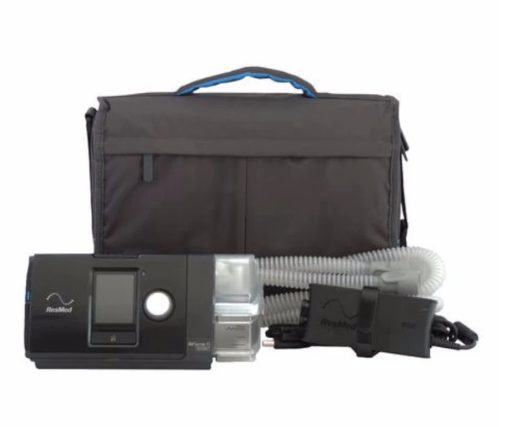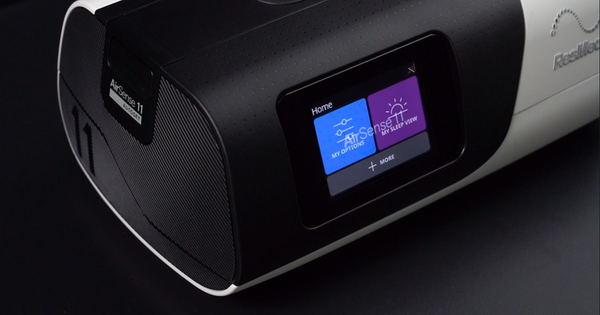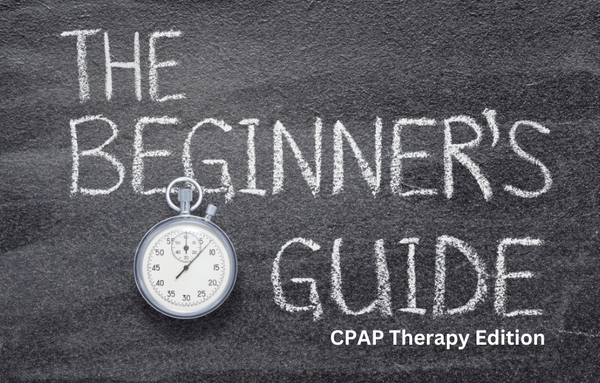Auto CPAP Machines: What You Need To Know
febbraio 25, 2020

If you have recently been prescribed an Auto CPAP machine by a sleep physician, it’s beneficial to learn exactly how these machines work and what makes them different from other PAP machines (such as BiPAP).
In our introductory guide below, learn everything you need to know and more about this form of sleep apnea treatment.
Auto CPAP Machines: An Introduction
Auto CPAP or APAP (these terms are used interchangeably) is a form of Sleep Apnea therapy used by many Obstructive Sleep Apnea (OSA) patients around the world. These PAP machines have been applauded by many for the benefits that they offer and the results they achieve.
The acronym APAP stands for Automatic Positive Airway Pressure. As we all know, Sleep Apnea therapy involves the delivery of airway pressure to a patient to prevent disruptions to breathing during sleep.
Unlike CPAP machines, which deliver air pressure at a consistent level, automatic CPAP machines have a range setting that allows the airway pressure levels to adapt to your breathing style. This range is prescribed by your sleep doctor. Although these PAP machines work on the same principle as CPAP, ultimately how they are used to treat Sleep Apnea symptoms is completely different.
What Do APAP Machines Look Like?

At first glance, an APAP machine looks identical to that of CPAP and BiPAP machines. And that’s because it is. Like most PAP machines, an automatic CPAP is made up of the following parts:
- A machine motor
- Tubing
- Sleep Apnea mask
- A humidifier (optional)
Depending on the brand of Sleep Apnea machine you choose, slightly different features may be offered (e.g. a heated humidifier, rainout reduction or an AutoRamp feature) but their bottom line stays the same: treating Sleep Apnea through automatic positive airway pressure.
How Beneficial Is APAP For Treating Sleep Apnea?
Many sleep physicians believe that the use of APAP for treating Sleep Apnea can help particular OSA patients sleep easier than other forms of PAP treatment.
According to a study carried out by the medical journal, Systematics Review, APAP machines not only improve sleep quality and energy levels but are also found to have an improved level of compliance. In fact, the benefits of using APAP machines are not hard to see.
Two Machines In One: Many Auto CPAP machines offer a feature that allows users to easily change between both automatic and continuous positive airway pressure. For example, if you have been prescribed CPAP pressure but find it hard to comply with, switching to the APAP mode with your sleep physician’s advice means you can continue sleep therapy without having to purchase a new device.
Adapts Easily To Different Sleeping Positions: Do you toss and turn a lot? Oftentimes, CPAP users find sleeping in certain positions to be too uncomfortable. Yet, because pressure changes automatically with APAP therapy, it means you can move around as much as you like and still receive the pressure that you need.
Great For Those With Sinus Allergies: If you are prone to suffering from allergies, sinus infections and congestion, APAP therapy can be very beneficial. Due to its ability to alternate pressure levels accordingly based on your needs, you don’t have to worry about getting your pressure settings adjusted by a doctor every time you have a cold.
Auto vs BiLevel PAP: What’s The Difference?
We’ve talked about BiPAP therapy before in a previous post and you may be wondering what the difference is between these PAP therapies. If so, you’re not alone.
To recap, BiPAP therapy provides OSA patients with two pressure levels. One for inhalation and one for exhalation. Similar to the way in which Auto CPAP machines work, it provides more than one pressure level.
The main difference can be found in how these pressure settings are determined. Unlike APAP therapy, a sleep physician doesn’t set a pressure range but rather two distinctive pressure levels. You will receive one called IPAP when you take a breath and the other, EPAP, as you exhale. While providing more flexibility than a continuous pressure level setting, it still isn’t as flexible as APAP.
Best APAP Machines & Accessories On The Market
When it comes to APAP and Auto CPAP machines, one of the top recommended machines is the DreamStation Auto by Philips Respironics. This stylish, low-profile device offers advanced features such as OptiStart technology and A-Flex Pressure relief to increase both therapy comfort and effectiveness. In addition, ResMed’s range of automatic Sleep Apnea machines such as the AirSense 10 AutoSet also are a popular choice by many OSA patients.
Have questions about getting started with APAP therapy? Reach out and one of our experts will be more than happy to assist you.
Share:
Leave a comment
Comments will be approved before showing up.




